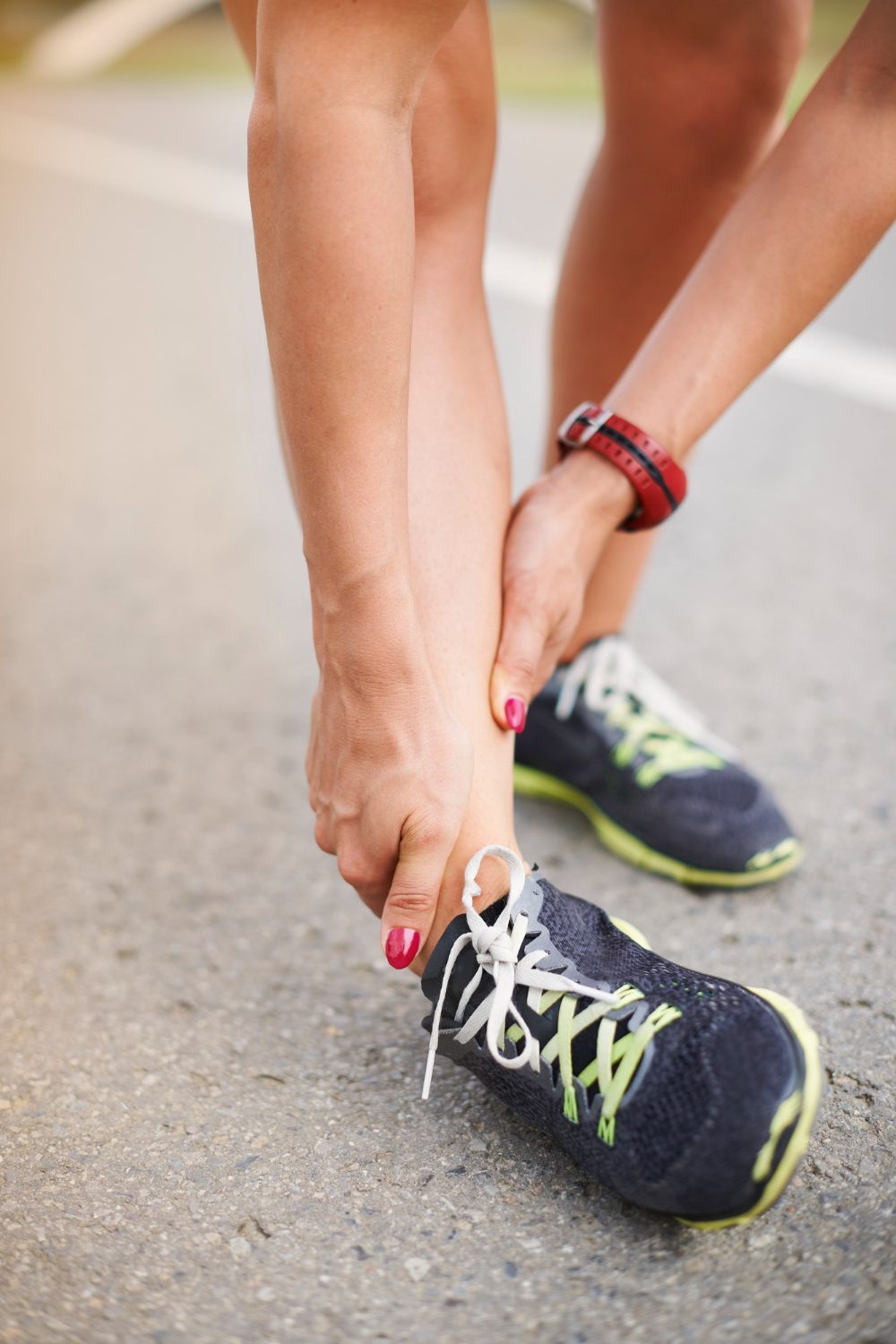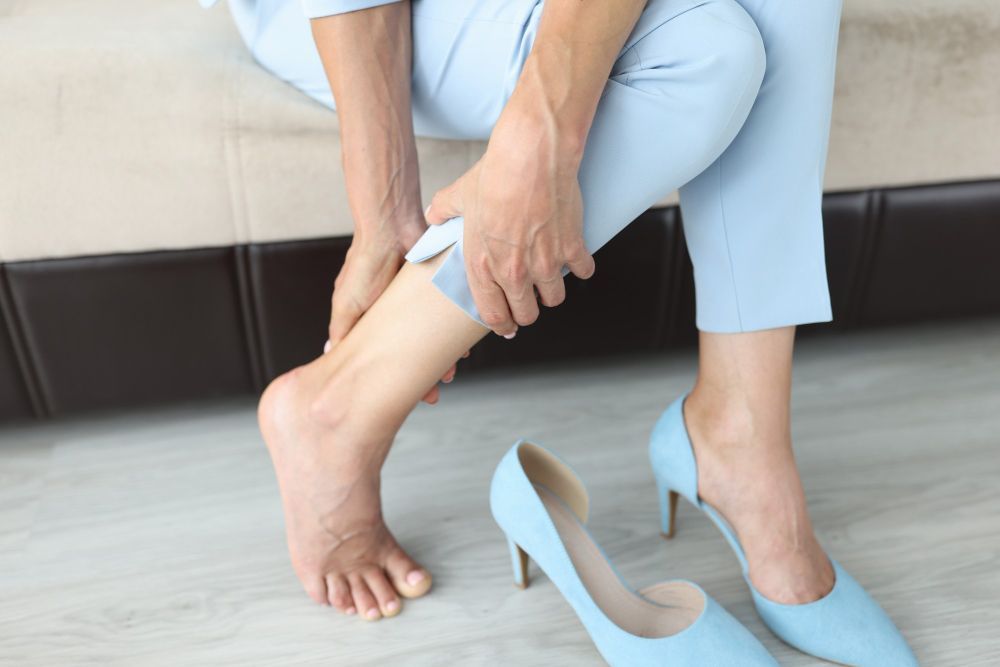Heel Pain
There are many different causes of heel pain!
Plantar Fasciitis
By far the most common cause of all pain is plantar fasciitis. It is thought that approximately 10% of the population will experience plantar fasciitis at some point in their lifetime.
What is it?
It is overload of the plantar fascia, a thick fibrous band that extends from the bone in the heel to the toes. The role of the plantar fascia is to help elevate the arch during normal walking. We used to think it was an inflammation of the plantar fascia, but we now know that is not the case as there is no inflammation, but it thickens.
Signs and Symptoms:
Generally pain just in front of the bone of the heel on the inside of the foot but it can spread into the arch and the other side of the foot. The pain can vary from mild to severe and is often present first thing in the morning or after periods of rest but this is not always the case.
Causes:
There can be numerous causes of plantar fasciitis. It can be caused by acute trauma, unsupportive footwear, activity modification, the way that you walk or run or the way that your foot functions (your biomechanics). Certain medical conditions including rheumatoid arthritis and inflammatory bowel disease can cause plantar fasciitis.
Prognosis (What is the probable course?)
It is a commonly held view that plantar fasciitis is a self-limiting condition, which means that it will stop hurting by itself even if it receives no treatment. However, there is very little evidence this is true. Even if this is true, it is suggested it will resolve itself in around two years! I certainly would not want to be hobbling around for two years, not being able to do what I would like to do while I was waiting for it to get better when there are many available treatment options to improve the pain within weeks!
Treatment Options:
There are many different treatment options for plantar fasciitis, including many with no evidence and some that have become fashionable myths!
At Essex Podiatry we only believe in using evidence based treatment options, to get you back on your feet and back to what you enjoy doing best as quickly as possible.
For plantar fasciitis these include:
- Footwear advice
- Activity modification
- Taping and strapping
- Icing
- Stretching and Strengthening
- Temporary wedging
- Fully bespoke customised foot orthoses
The number 1 key to getting rid of plantar fasciitis is to make sure that what you have is actually plantar fasciitis and not another condition that can mimic it which would need a different form of treatment.
In order to do this, it is strongly recommended that you have your heel pain assessed properly by a podiatrist with specialist knowledge and experience of plantar fasciitis and its treatment options. Our podiatrists at Essex Podiatry have over 30 years of combined experience of assessing and successfully treating heel pain.


Achilles Tendinopathy
Achilles tendon pain is the most common cause of pain in the back of the heel. These can be separated into insertional or non-insertional (also known as mid-portion). Insertional is where the tendon attaches to the heel bone and the pain is felt lower down on the Achilles tendon.
Non-insertional or midportion as the name suggests, is where pain is felt further away from the bone and is in the centre of the Achilles tendon.
Achilles tendon disorders can range from partial and complete tears caused by sudden acute trauma or thickening and damage to the lining of the Achilles or to the tendon itself that has built up over time.
The causes of chronic damage to the Achilles tendon include poor foot and ankle function, unsupportive footwear, changes to activity levels or training errors or some medical conditions.
Treatment of chronic Achilles injuries includes;
- Stretching calf muscles
- Progressive loading of the Achilles tendon itself
- Changing foot and ankle mechanics through the use of heel raises and customised foot orthoses
- Footwear advice
- Correcting training errors or modifying activity levels
Policeman's Heel
Policeman's Heel, is often incorrectly diagnosed as plantar fasciitis and plantar fasciitis is often incorrectly called Policemans Heel!
What is it?
Between the bottom of the bone in your heel and the skin is a fluid filled sac called the plantar calcaneal bursa. Its role is to help absorb shock and prevent friction.
Inflammation of the bursa is therefore called plantar calcaneal bursitis which is the true policeman's heel.
Signs and Symptoms:
Pain underneath the central portion of the heel pain on standing that can get worse the more you walk on it. It can be worse barefoot.
Causes:
There are many causes of Policemans heel but generally it is due to overload which can be caused by acute trauma, unsupportive footwear, activity modification, the way that you walk or run or the way that your foot functions (your bio-mechanics).
Prognosis:
Generally the pain will persist. Reducing activity levels can reduce your pain, but at Essex Podiatry we want to get you back on your feet and back to what you enjoy best.
Treatment Options:
Treatment options for Policeman's heel are based around reducing load on the plantar calcaneal bursa.
These can include;
- Footwear advice
- Activity modification
- Taping and strapping
- Icing
- Fully bespoke custom made foot orthoses

